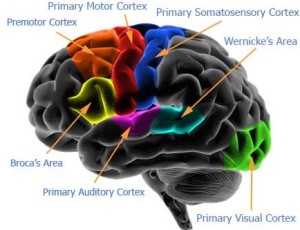 By the time I’d finished the third paragraph of “Medical trial offers Michigan families hope,” I knew I had to forward the story to Dr. David Prentice, who knows pretty much all there is to know about stem cell research. Written by Shawn Lewis of the Detroit News, it is a wonderfully inspiring story about Andrew Kijek, who will be infused with his own umbilical cord blood stem cells on Friday.
By the time I’d finished the third paragraph of “Medical trial offers Michigan families hope,” I knew I had to forward the story to Dr. David Prentice, who knows pretty much all there is to know about stem cell research. Written by Shawn Lewis of the Detroit News, it is a wonderfully inspiring story about Andrew Kijek, who will be infused with his own umbilical cord blood stem cells on Friday.
Andrew, who is 11, has spastic cerebral palsy and cannot crawl, walk, talk, hold his head upright. or control his muscles.
His mother, however, is able to see the bigger picture.
“He’s already perfect,” Maureen Kijek of Shelby Township, told Lewis after a recent physical therapy session. “We just want him to be happy.”
A clearly pleased Dr. Prentice got back to me immediately. He explained that the results of other trials and results, including from ongoing trials at Duke University and Georgia Health Sciences University, have been very encouraging.
“It’s wonderful to see more doctors recognize the potential of adult stem cells from umbilical cord blood for treating cerebral palsy in young children,” he said. “This is such a needed and simple application, and many young lives could be influenced by using these adult stem cells from cord blood.” Dr. Prentice cited the example of little Chloe Levine.
As Lewis explains only 5% of women save their newborn child’s umbilical cord blood, a rich source of potential help to treat various diseases. Maureen Kijek told Lewis that the decision was prompted by a family history of cancer.
“There’s a history of breast cancer — my mom died from it when I was 18, so I felt compelled to do it,” Kijek told the Detroit News. Lewis said Mrs. Kijek calls her decision a “whisper from God.”
The family is at the Georgia Regents University in Augusta, Georgia for the first of four visits. “The stem cells will be thawed and reintroduced intravenously into his body Friday,” Lewis wrote, adding that Andrew’s mother is cautiously optimistic about the trial. “”We are super excited, hopeful and the timing just feels right,” Kijek said.
Allison Thurman, 3, was the first Michigan participant in the trial. In 2010 she, too was clinically diagnosed with spastic cerebral palsy. Since Allison completed the trial treatments a year ago, “her mother, Erica Thurman, said she has noticed improvement in her daughter’s speech and ability to use her legs,” Lewis wrote.
“’At first, she was only able to use her walker when we assisted her by holding her around the hips,’ Thurman said of her daughter. ‘Two weeks after the stem cell injections, she was pulling herself up on her walker.’
“Thurman said Allison’s speech also has dramatically improved.
“’Her vocabulary has increased, the clarity of her words, pretty much everything has improved,’ she said.”
Asked about the decision to store the cord blood stem cells and undergo the treatment, Mrs. Thurmond said, “My husband and I feel it is the greatest gift we could provide our child,” adding, “We want our child to live a happy, fulfilling life and to be as active as she possibly can — physically active, whatever that is, to reach her maximum potential.”
Source: Dave Andrusko, http://www.nationalrighttolifenews.org


You must be logged in to post a comment.